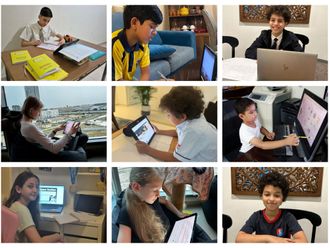
The primary reason we learn is to be able to use our learning for actions that are practical and pleasurable in our lives. When we have a problem to solve we think critically. One does good critical thinking if one is facing challenges and solving problems. It is difficult to solve problems effectively unless one thinks critically about the nature of the problems and of how to go about solving them. So, critical thinking is working our way through a problem to a solution.
LEARNING CURVE 1
The systematic or analytic approach to critical thinking
This is the most widely studied and used approach to problem solving. It is the application of the scientific method to the resolution of problems; therefore, it has a good pedigree. Many people say that the analytical approach to problem solving is the essence of critical thinking. That is true. When we approach a problem from an analytic standpoint, we are thinking rationally and in an organised fashion. We are applying solid criteria to our work, especially logic, accuracy and clarity. We are putting our thinking process and its results to empirical tests of adequacy.
The 6-step approach to clear, analytical thinking.
1.Identify the problem as clearly as possible.
2.Generate criteria and consider Possible Alternatives for a Solution.
3.Choose the most likely Alternative Solution to the Problem.
4.Test or apply the selected strategy.
5.Evaluate progress towards the solution of the problem through feedback.
6.Verify and confirm the effectiveness of the alternative in solving the problem.
LEARNING CURVE 2
Identify, and understand, the problem
The first step in this approach is to understand the problem. Einstein said that a problem well-defined is a problem half solved. Posing the problem is a challenge and getting a firm grasp of what is the nature of the problem is a major step towards its solution.
Look at this problem:
A bat and a ball cost $1.10
The bat costs one dollar more than the ball.
How much does the ball cost?
Careful analysis of the problem would stop your child from jumping to the intuitive conclusion, which will be wrong.
One way to teach problem identification to your child is through what is called ‘problem posing’, which improves students’ thinking, problem solving skills, attitudes and confidence in mathematics.
First steps include asking:
•Do you understand all of the words, terms and concepts presented in the problem?
•Do you understand what you are supposed to demonstrate or be able to do?
•Do you think you have enough information to help you solve the problem, or is more needed?
LEARNING CURVE 3
Help your child to ask questions that may lead to clarifying the problem, like:
•What is causing the problem?
•Where is the problem?
•What do I need to explore in order to understand the problem?
If your child doesn’t understand a problem, she will not be able to solve it. She may be looking at it from the wrong angle. If she is a math student, changing the way she approaches a problem will likely allow her to solve it correctly.
LEARNING CURVE 4: EXAMPLES OF GOOD LEARNING APPROACH
One of my favourite examples of changing approach can be seen in this example, from third grade math.
1) A ship is travelling from Africa to the USA. It carries jungle animals for a zoo.
The ship has 7 lions, 3 elephants, 6 giraffes and 2 rhinoceros.
How old is the captain of the ship?
Note that the student must figure out which mathematical operation is required. He is not told to add or subtract nor to multiply nor divide. He must figure that out. Then he has four numbers with which to work. Students usually realise that the most logical answer is to multiply the number of lions times the number of giraffes to get a logical age for the captain.
(This is a perfect example of how to teach the student to think creatively and critically. The student has four numbers and four operations (add, subtract, multiply and divide). He has a question. He has to figure which two of the numbers he should use and which operation.
He has to think about what would be a logical answer. He might add lions and giraffes and get thirteen, but most students recognize that 13 is too young to be a captain. Most students, after a bit of thought, will realise that they must multiply lions times giraffes to get a number which would be a reasonable age for a ship captain.)
2) There are 30 legs in my backyard, counting dogs and children. How many dogs and children are in my back yard?
Again, if asked to define the problem, will the child realise that there may be several possible answers? Can you prompt him to think of alternatives? They can range from 7 dogs and one child to 13 children and one dog! Will your child realize that? Knowing these possibilities is a basic part of being able to understand problems.
LEARNING CURVE 5: GENERATE ALTERNATIVES FOR THE SOLUTION If your child has been able to state or describe the nature of the problem and what is being asked for, then she should be able to develop some ideas about how to solve it. Look at this problem.
1) Matt is going on a walk-a-thon. For every half mile he walks, he will get 75 cents. When he finished his walk he had $3.75. How far did he walk?
If she has understood the problem then she should be able to identify that division is the correct method for solving the problems.
2) George gets an allowance every day. On Monday he gets 1 cent, on Tuesday he gets 2 cents, on Wednesday he gets 3 cents, on Thursday he gets 4 cents and so on. How much money will he have by the 12th day? By the 16th day?
What kind of alternatives can be generated? One is to simply add the amounts for each day until achieving the answer. Another is to multiply the day by 1 cent and add all of the results.
3) A group of students went on a camping trip with their families. They spotted a cave on the side of a hill and decided to explore it. All of the adults except one went into the cave to make sure it would be safe for the children to enter. Just after the adults entered, a large boulder dislodged from above and fell over the entrance of the cave so the adults could not get out.
What has happened? What is the problem? How big is the boulder? How many children are there? How might the problem be solved? Who has a cell phone?
LEARNING CURVE 6: CONCLUSIONS
1) Choose the most likely Alternative Solution to the Problem
Remember the ship with zoo animals. The students had several options including four functions and four numbers. They had to decide which function would come up with the most reasonable answer. They had to choose the most likely alternative. In math problems, your child will have to identify which functions are required to develop a solution to the problem.
2) Evaluate progress towards the solution of the problem through feedback
This is particularly important for longer and more complex problems but can also be applied to less complex ones. Is she identifying all of the options available in the solution? Is she applying the correct math functions? Are the results accurate and correct? Is she progressing adequately in terms of time, that is is she taking too much or too little time to solve the problem?
3) Verify and confirm the effectiveness of the alternative in solving the problem
Your child will want to know if her responses are correct. If she is working directly with you it will be possible for you to provide immediate confirmation. If she is doing homework, the worksheets have to go to school to be seen by the teacher. Getting feedback from the teacher can often be a long process.
LEARNING CURVE 7: A More Elaborate Examples of Problem Solving
Emily’s aunt gave her 125 dollars to spend on clothes at the mall. She bought four blouses that cost $18 each and a pair of pants that cost $22. How much money does she have left?
Identify the Problem How much money left after purchases
Generate Alternatives Addition, multiplication and subtraction Multiply 18 x 4
Add to the above sum 22
Choose Most Likely Alternative Add the costs of the items Subtract from the original amount
Apply the Alternative Add and Subtract Multiply 18 x 4
Add to the above sum 22
Subtract from 125
Evaluate Progress During progress, check to see that the sum of the amount of clothes purchased is correct before subtracting it from the original amount. 18 times four = ____
72 + 22 = ____
125-94 = _____
Confirm Effectiveness Take the final amount and add it to the value of the purchased goods to see if it equals the amount Emily’s aunt gave. Final answer was $29
Confirmation by adding 72+22 + 29 to equal 125
This simple, step-by-step approach to problem solving, if used from first or second grade, for a few years, will develop a cognitive strategy of systematic problem-solving for your child. That strategy will last a lifetime.
In eleven articles, we have provided a systematic and integrated approach that will help parents teach their children to think critically. We hope you will apply this approach.












